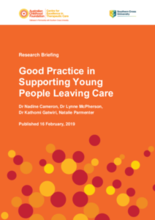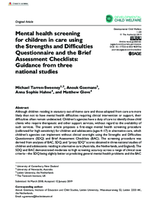Displaying 261 - 270 of 579
This paper summarises the processes by which children become vulnerable to sexual exploitation and related harms within or facilitated by orphanages.
"Indigenous newborns and babies less than one year old [in Western Australia] are being removed from their parents and placed into out-of-home care at increased rates," according to this article from the Guardian.
This research summary provides an overview of what young people leaving residential care in Australia need and how those working in residential care can best help young people prepare for independence.
This study will determine where disparities in child protection involvement exist among Aboriginal and non-Aboriginal children and characteristics associated with infant removals.
This brief from SNAICC – National Voice for our Children highlights the issue of the disproportional numbers of Aboriginal and Torres Strait Islander children in out-of-home care in Australia, which has reached "national crisis proportions," and outlines key steps that need to be taken to address this issue.
This article outlines the arguments made in recent litigation undertaken by the Public Interest Advocacy Centre (PIAC) on behalf of young people who requested access to legal audits conducted on their files by the New South Wales (NSW) Department of Family and Community Services (FACS).
This systematic literature review examines how the construct of cumulative harm is understood and operationalized within current Australian child protection legislation, policy, and practice and situates this within an international context.
The present article proposes a first-stage mental health screening procedure (calibrated for high sensitivity) for children and adolescents (ages 4–17) in alternative care, which children’s agencies can implement without clinical oversight using the Strengths and Difficulties Questionnaire (SDQ) and Brief Assessment Checklists (BAC).
The present article proposes a first-stage mental health screening procedure (calibrated for high sensitivity) for children and adolescents (ages 4–17) in alternative care, which children’s agencies can implement without clinical oversight using the Strengths and Difficulties Questionnaire (SDQ) and Brief Assessment Checklists (BAC).
The primary aim of a recent qualitative study was to optimise grandparent-grandchild connectedness after child safety concerns.





